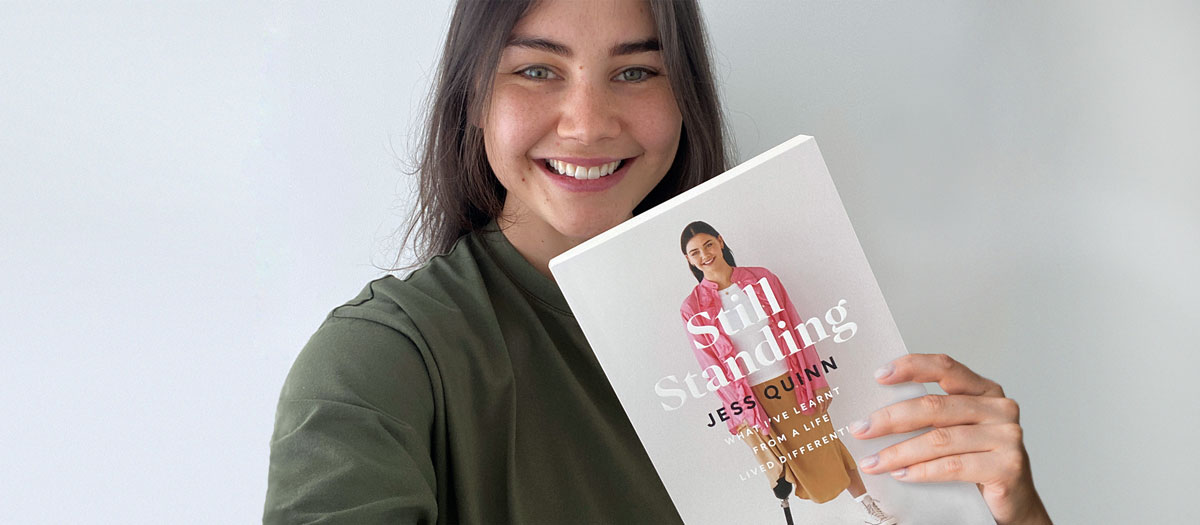Life Insurance
Lump sum payment if you were to pass away or are diagnosed with a terminal illness.

The most important things in your life are your family, your lifestyle and your future. This is what life, trauma and disability insurance are there to protect.
For Individuals
For Business
Lump sum payment if you were to pass away or are diagnosed with a terminal illness.
Choose from private health insurance or specialised cancer insurance.
Financial support if you or your child become seriously ill or injured.
Lump sum payment if you become permanently disabled and are unable to work.
Income protection insurance provides financial support if you can't work due to an accident or illness.
Simple plans you can buy online. Get protected with basic life, rent or mortgage protection.
Lump sum payment if you have an accident and suffer one of the covered injuries.
Protection for business owners if a key person becomes seriously ill, is injured, or dies.
Providing cost effective and comprehensive corporate group insurance for your employees.
Financial support if a key person of your farm becomes seriously ill, injured or passes away.

AIA Vitality encourages and supports you to live a healthier life, while giving you access to great rewards along the way.
Learn more about the amazing benefits, discounts and rewards you'll have access to with AIA Vitality.
Learn how you can earn up to 15,000 points and $260 a year in Active Rewards.
Find out how you can earn 25 Airpoints Dollars or $25 Woolworths vouchers.
Get help with making a claim.
AIA Group is one of the largest life insurers in the world, with a presence in 18 markets across Asia Pacific. AIA New Zealand Limited is part of the AIA Group and has been providing insurance to New Zealanders since 1981.

Get to know us
Work with us
News & Information
We're here to help! Check out our quick links and digital tools. Still have a question? Get in touch via Live Chat.
Contact AIAQuick Links
Understanding your policy
Other useful information
Updating policies, moving house, changing names, Covid-19 support... our FAQs section has all the answers and forms.
Product updates, enhancements and policy wordings for current and closed AIA or Sovereign policies.
Find out more about CPI indexation and how it may affect your insurance cover.
Helpful advice if you have recently arrived, or are considering moving to New Zealand.
A list of some of the services available in New Zealand that offer support, information and help.
The latest AIA investment performance information, as well as a list of closed and terminated investment products.
If you have a complaint, we’ll do our best to resolve the situation.
{{title}}
{{label}}AIA Vitality NZ - 5 min read
29 September 2021
After losing her leg to cancer at a young age, AIA Vitality Ambassador Jess Quinn has maintained a positive outlook on life. However, as she shares in her memoir, Still Standing, not everything has been smooth sailing (including the writing process).

When I signed my publishing deal, I was the fittest, most able I’d been in my life. Then, just three months later, I hit the biggest turbulence I’d experienced since having cancer when I was eight years old.
This book was supposed to take a year, but it ended up taking two and a half because of what I was experiencing with my legs.
When I began writing, I was dancing a lot, plus doing almost two hours a day of training. I never considered myself to be ‘disabled by my disability’ until the past couple of years. Then, I injured my good leg and – as you can imagine – my life became really challenging.
To make things worse, as soon as the injury started getting better, what I have left in my prosthetic side started swelling. For about 18 months, I couldn’t put on my prosthetic each morning. Some days, I couldn’t put my leg on at all. Because of that, my good leg – which was only semi-healed – began to flare up again.
Going through chemo and losing my leg as a child was difficult – but this experience was so much harder because I knew exactly what the implications were.
I was living in LA at the time, and I had to come home to New Zealand because I was feeling so horrible. I couldn’t work, I gave up public speaking, and I was constantly in a state of ‘My life was hard, my life is hard.’ Each night, I was going to bed stressing about how my leg would be the next morning. These challenges became a large portion of the context for my book.
I’m not a very good crier – I often joke that my tear ducts are broken – but those emotions manifest in my body in different ways. During the writing process, I noticed the trauma of my experiences from childhood coming up again.
I’ve learned a lot about the way our brain can manifest things in our bodies. If we’re constantly living in a state of ‘I'm broken’, that's going to present physically. With that in mind, I’ve slightly pulled back a little bit on the way I speak about my leg. I’m trying to balance being realistic and authentic on social media, but also trying to be more positive for myself.
I’m doing better these days, though. I’m able to walk the dog around the block and know my leg is going to go on most mornings.
Part of my desire to write this book was because I don’t see adversity as something like, ‘Check, I’ve had my one big challenge in life.’ We all go through so many ups and downs at different scales – we’re all a match for our own mountain.
Adversity should be seen as an obstacle, not a roadblock. Often, we get hit with something and it completely stops us – we plummet and don’t know what to do. But, in the grand scheme of things, it’s just a part of life.
When choosing the cover for my book, I almost didn’t put my leg on it – because I didn’t want to pigeonhole it as an experience people couldn’t relate to.
We need this level of representation, this range of experience, to be shared openly. While it’s great to see conversations about diversity evolve – to see different kinds of bodies on billboards – you need to have people with different cultures and experiences working behind the scenes to shift the paradigm.
Young people won’t aspire to be something great if they don’t see someone like themselves doing it – and I’m hoping to be part of that change.
Article by: AIA Vitality Staff Writer
Staff writers come from a range of backgrounds including health, wellbeing, music, tech, culture and the arts. They spend their time researching the latest data and trends in the health market to deliver up-to-date information, helping everyday New Zealanders live healthier, longer, better lives.
Disclaimer: The information in this article is general information only and is not intended as financial, medical, health, nutritional, tax or other advice. It does not take into account any individual’s personal situation or needs. You should consider obtaining professional advice from a financial adviser and/or tax specialist, or medical or health practitioner, in relation to your own circumstances and before acting on this information.
This content is brought to you by AIA Vitality
AIA Vitality is a science-backed health and wellbeing programme that provides the guidance, tools, and rewards to get more out of life so you can start thriving.
You might like these
We will be in contact as soon as we can.
Did you know, with an eligible policy you can view, claim and update your insurance with MyAIA? Find out more